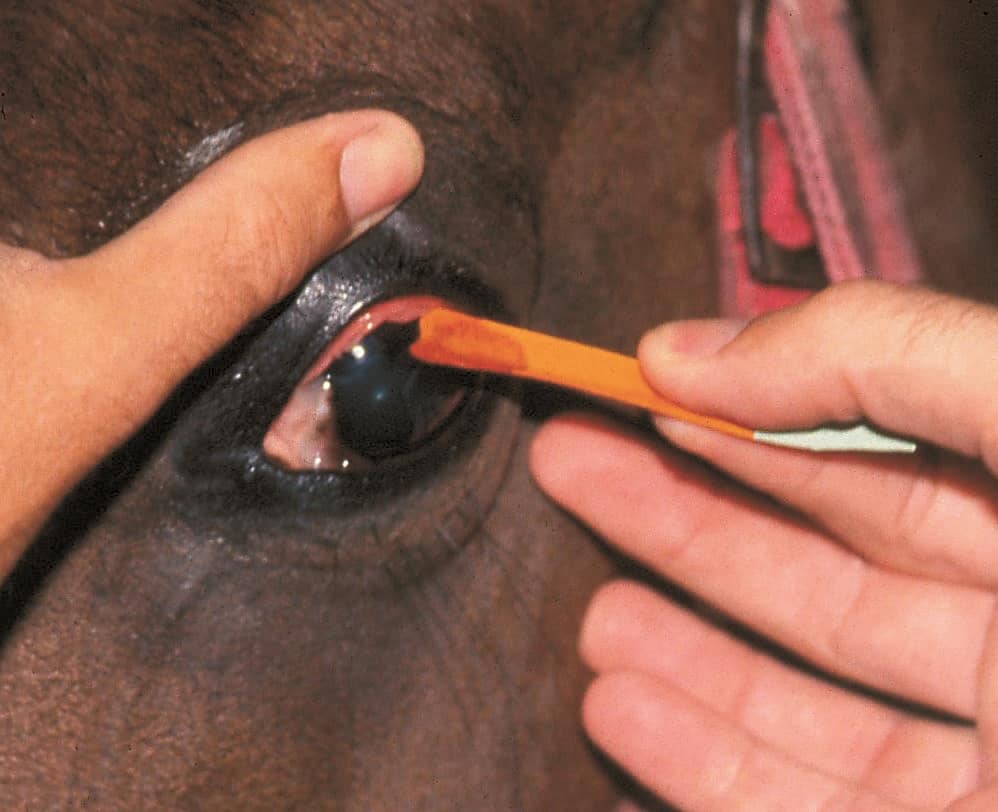Bacterial Corneal Ulcers in Horses

Editor’s Note: This article was revised by the author to reflect new and updated information in November 2017.
Blindness can result from even the simplest corneal ulcer
The cornea is a thin and transparent, yet extremely strong tissue that supplies a majority of the eye’s refractive, or light-bending, power. It is one of the most sensitive tissues in the body. The thickness of the equine cornea is about 1.5 mm, and it consists of four layers:
- The outer epithelium is a barrier to bacteria and the tear film;
- The thick stroma is mostly collagen;
- Descemet’s membrane is the very thin basement membrane secreted by the corneal endothelium; and
- The inner endothelium is only one cell layer thick and contains a pump that is essential for corneal transparency.
The environment of the horse constantly exposes him to bacteria and fungi. The species present vary depending on the season and geographic area, but Gram-positive bacteria (identified by a common laboratory test) are the most common species found in normal horse eyes and Gram-negative in corneal ulcers. The mechanical action of the eyelids provides a continuous mechanism to sweep bacteria from the corneal surface. Tears are removed from the eye with each blink, decreasing the number of bacteria in the tear film. The eye’s immune system and its epithelial barrier also help prevent bacterial adhesion and invasion into the cornea
Create a free account with TheHorse.com to view this content.
TheHorse.com is home to thousands of free articles about horse health care. In order to access some of our exclusive free content, you must be signed into TheHorse.com.
Start your free account today!
Already have an account?
and continue reading.
Written by:
Dennis E. Brooks, DVM, PhD, Dipl. ACVO
Related Articles
Stay on top of the most recent Horse Health news with











